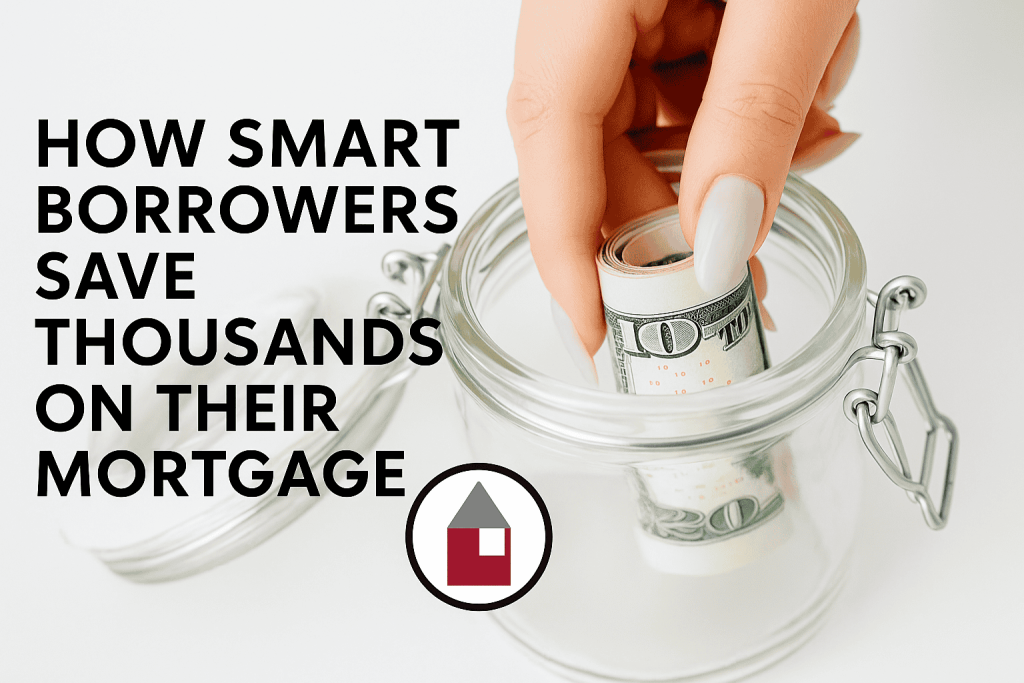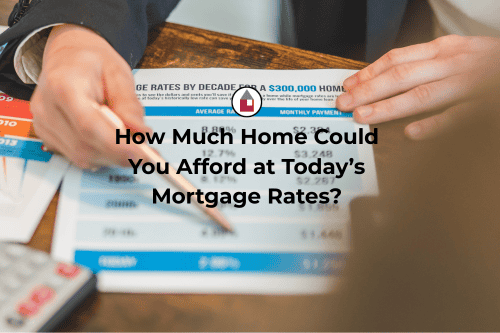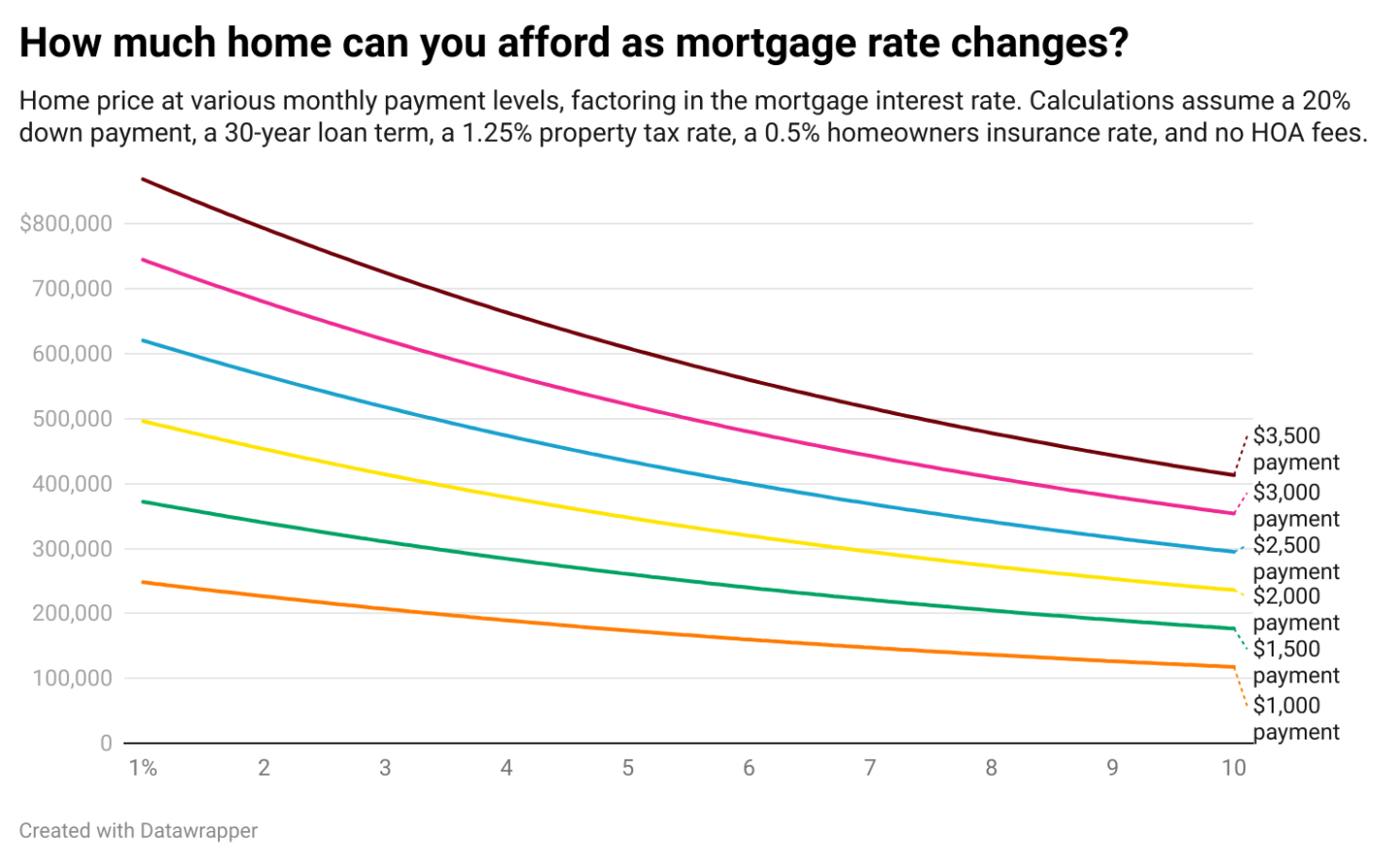
When you’re buying a home in Huntsville, one of the smartest moves you can make is shopping around for a lender.
Many buyers assume rates are the same everywhere, but they aren’t. A recent Realtor.com® analysis of nearly two million loans found that borrowers who compared multiple lenders saved an average of $44,000 over the life of a 30-year mortgage.
But saving money doesn’t stop there. Beyond finding the right lender, read on to learn other ways to reduce your monthly costs, as well as the total cost of your home.
If you want to buy a home in Huntsville without going overbudget, this guide will show you where those savings are hiding.
Your Choices Matter More Than the Market
Mortgage rates move up and down with the broader economy, but your personal rate depends largely on your own financial picture.
Realtor.com’s research showed that when average rates hovered around 6.6%, borrowers with stronger profiles were able to secure rates closer to 6.25%, while others paid rates closer to 7%.
That half-point difference adds up fast. On a $425,000 home, that’s more than $60,000 in savings over a 30-year loan.
So, while you can’t control the market, you can absolutely influence what you pay.
The Biggest Savings Come from Comparing Lenders
Shopping for a lender takes time, but it’s one of the easiest and most effective ways to lower your mortgage costs.
In the study, rates varied by as much as 0.55 percentage points between lenders.
For a buyer in Huntsville purchasing a $425,000 home with 20% down, that difference translates to:
- About $122 in monthly savings
- Roughly $1,464 per year
- Nearly $44,000 over 30 years
That’s a life-changing difference just for taking the time to compare offers.
To find your best deal, contact at least three lenders on the same day and ask each for a written rate quote.
Review more than just the interest rate; check the fees, points, and total loan costs.
If you already have a preferred lender, ask others to match or beat their offer. A few extra calls could mean years of savings.
Credit and Down Payment Milestones That Pay Off
You don’t need a perfect credit score to qualify for a good rate, but improving your credit even slightly can help you save.
Moving from “good” (660–720) to “very good” (720–760) credit could lower your rate by about 0.11 percentage points, which equals roughly $24 a month, or more than $8,000 over the life of your loan.
Increasing your down payment can also pay off. Moving from 10% down to 20% saves you both on mortgage insurance (PMI) and on your interest rate. On a $425,000 home, that can mean around $281 less per month and more than $100,000 saved over 30 years.
If saving that much cash feels out of reach, focus first on what you can change: your credit, your budgeting, and your lender choices.
Also, look into down payment assistance programs in your area. Many first-time buyers qualify for government-funded programs that assist with down payments through grants, low-interest loans, or tax credits.
- FHA loans require as little as 3.5% down
- VA loans don’t require any down payment for eligible veterans
- USDA loans also nix the down payment for qualifying rural properties
- Local & state assistance programs: many states offer grants to first-time homebuyers.
Property Type and Use Can Affect Your Rate
Your interest rate doesn’t just depend on you; it depends on the property.
Second homes and investment properties usually come with higher rates: around half a percentage point more than primary residences.
Manufactured homes, condos, and co-ops also tend to have higher rates, while single-family homes and planned unit developments often qualify for lower ones.
If you’re exploring options in Huntsville, talk with your lender early about how your property type might affect your rate and what financing programs might help.
More Smart Ways to Save Before and After You Buy
Once you’ve found your lender and locked in your rate, you can still save money through smart financial moves.
These strategies can help lower your monthly bills and give your budget more breathing room:
- Shop around for home insurance: Get multiple quotes each year to avoid overpaying for coverage.
- Bundle insurance policies: Combine home and auto coverage to earn discounts of 10–20%.
- Invest in energy efficiency: Upgrading insulation, windows, or appliances can cut energy costs by 10–30%.
- Check your property tax assessment: After closing, review your tax valuation and appeal if it seems too high.
- Automate payments: Some lenders offer small interest discounts or fee waivers for auto-pay enrollment.
Each of these small adjustments can make a noticeable difference in your long-term affordability, especially when layered on top of a well-chosen mortgage.
Final Tip: Work with an Agent who Knows How to Negotiate
A skilled buyer’s agent can save you money long before you reach the closing table. The right agent doesn’t just open doors; they help you spot value, avoid overpaying, and negotiate terms that work in your favor.
Here’s what a strong negotiator can do for you in Huntsville:
- Help you understand local pricing trends so you can recognize which homes are fairly priced, underpriced, or overvalued.
- Alert you to listings that represent great value before the competition spots them.
- Negotiate with sellers to secure a lower purchase price when possible.
- Protect you from overpaying by including contingencies for inspections and appraisals.
- Request repair credits or concessions based on inspection results to reduce your out-of-pocket costs.
Having an experienced negotiator on your side can make a major difference in what you pay and how confident you feel about your purchase.
The Bottom Line for Buying in Huntsville
Buying a home isn’t just about finding the right property. It’s about making smart financial choices that give you stability and freedom for years to come.
Start by comparing lenders, then take simple steps to strengthen your credit, plan your down payment, and lower your monthly housing costs.
The more intentional you are now, the more affordable your home will feel later.
In Huntsville, where every dollar counts, those savings could be what turns a good purchase into a great one.



 Imagine saving $150 a month on the same home, just because rates dropped. Read on to see how much home could you afford at today’s mortgage rates.
Imagine saving $150 a month on the same home, just because rates dropped. Read on to see how much home could you afford at today’s mortgage rates.
 If your home didn’t sell the first time, or you’re thinking about listing soon, there’s one question that can make or break your entire experience:
If your home didn’t sell the first time, or you’re thinking about listing soon, there’s one question that can make or break your entire experience: